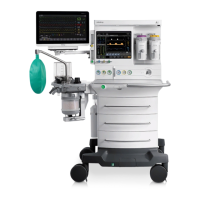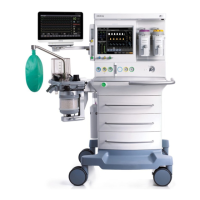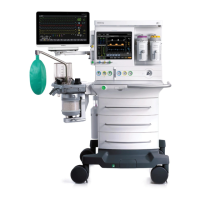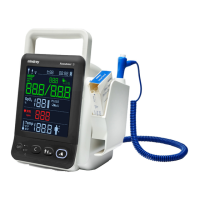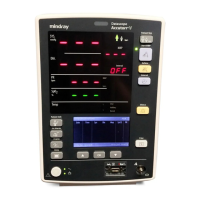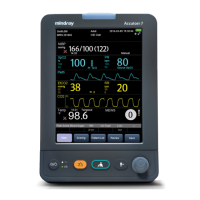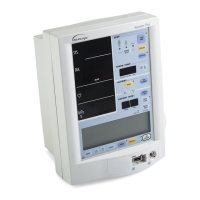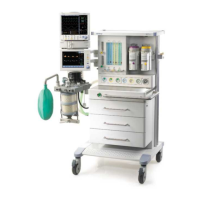2-72
2.3.5 Breathing Subsystem
The breathing subsystem is an inspiratory and expiratory channel through which the gas flows
under breathing pressure between the fresh gas inlet, the patient connection port, and the exhaust
valve/port. The breathing subsystem provides a closed loop for the anesthetic gas, making the
expired gas from the patient enter the patient's breathing circuit again after the CO2 in the gas is
absorbed, to control the patient's anesthesia depth. It consists of the patient circuit assembly,
airway pressure gauge assembly (18.2), auto/manual switch assembly, auto/manual drive valve
assembly (18.25), APL valve assembly (18.26), absorber canister (18.18), bypass assembly
(18.17), volume exchanger assembly (18.24), O2 cell calibration valve assembly, and drive gas
assembly. The pneumatic diagram of the breathing subsystem is shown below.
In auto mode, during inspiration, the drive gas drives the mixed gas in the volume exchanger
(18.24) to flow through the auto/manual valve (18.25) and absorber canister (18.18) and then mix
with the fresh gas. The mixed gas flows through the inspiratory check valve (18.1) and
inspiratory flow sensor (18.4), and is pressurized into the patient's lungs through the breathing
tube connected to the inspiratory port (18.9). The CO2 in the mixed gas is absorbed by the
absorbent (such as sodalime) in the absorber canister when passing through the absorber canister,
to prevent the CO2 from being inspired by the patient. During expiration, the mixed gas in the
patient's lungs flows through the breathing tube connected to the expiratory port (18.10), passes
through the expiratory flow sensor (18.11), expiratory check valve (18.15), and auto/manual
valve (18.25), and enters the volume exchanger (18.24) again, to pressurize the drive gas from the
last inspiratory cycle out of the volume exchanger (18.24) and drain it through the expiratory
valve (18.22), so as to complete a breathing cycle.
In manual mode, the auto/manual valve (18.25) is driven by the pilot valve to switch to the
manual state. In this case, you can control the patient's breathing by pressing the manual bag, and
the excess gas escapes through the APL valve (18.26).
Figure 25 Schematic diagram of the breathing subsystem
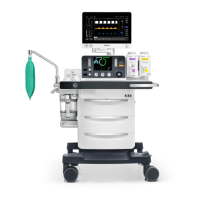
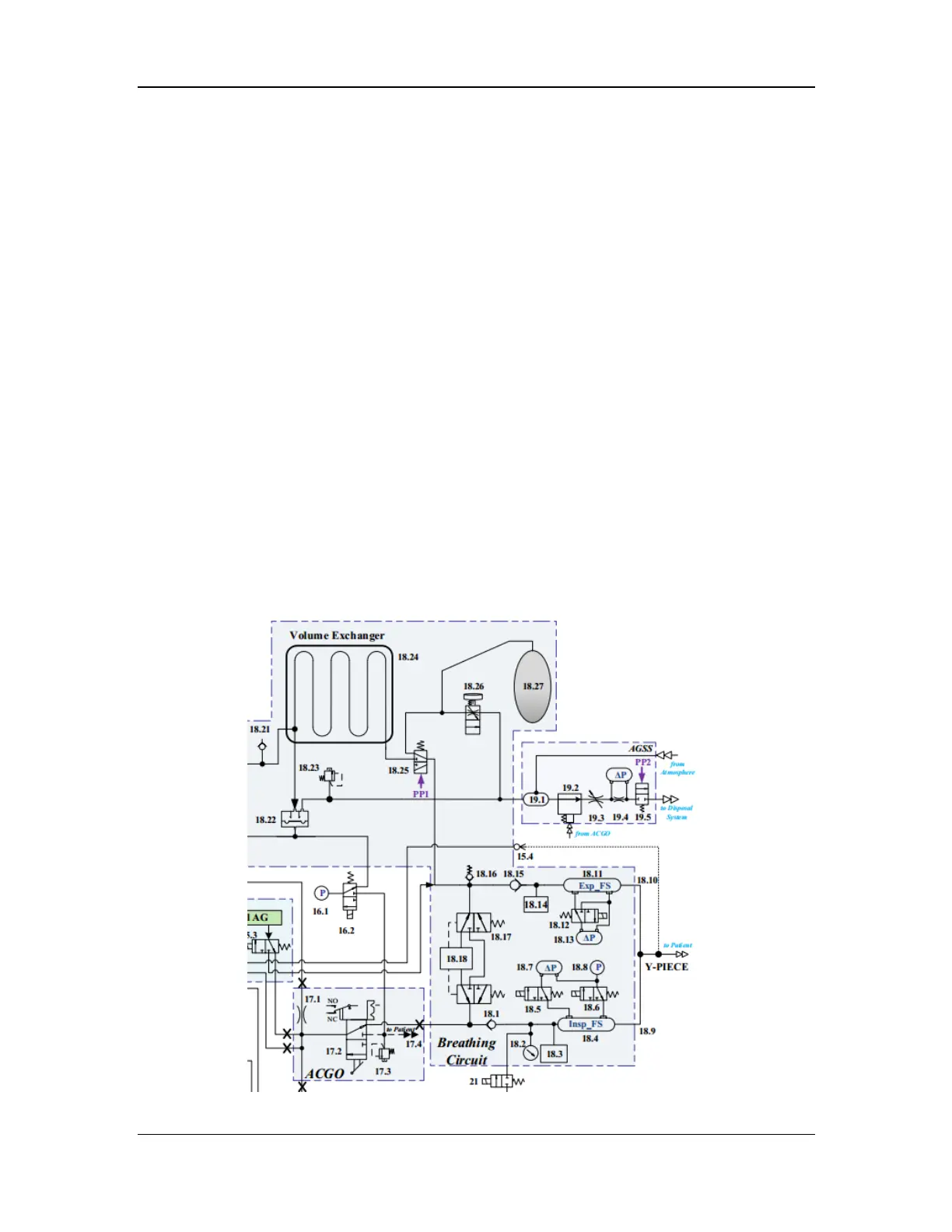